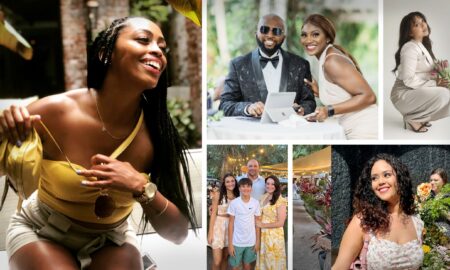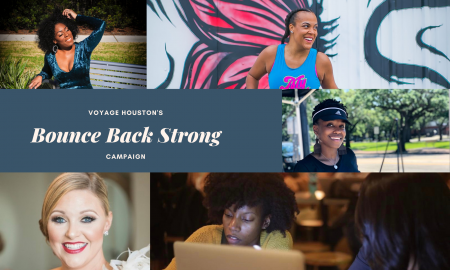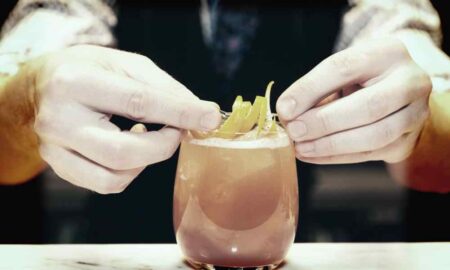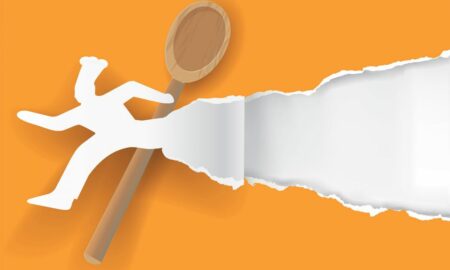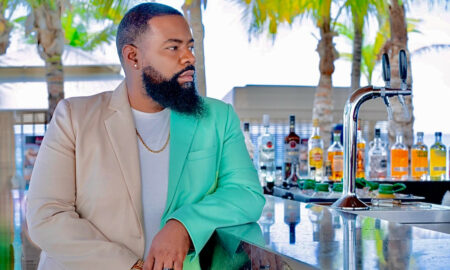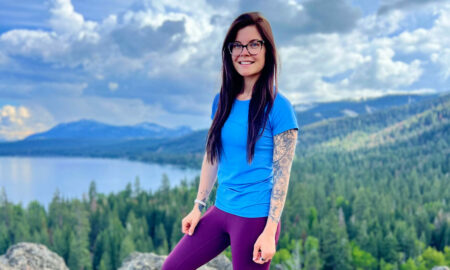

Today we’d like to introduce you to Alexandra Robinson.
Every artist has a unique story. Can you briefly walk us through yours?
I am a military brat. No one place was home for too long growing up, but I claim Kansas City as my hometown. Since 2012, I have been living and working in Austin, Texas. I am an artist, a wife, a mother to two young girls, and an educator. These various roles definitely inform my point of view and my art practice. However, I don’t believe in the balance of these roles as much as changing what’s in focus. My ability to home in, to focus, also allows me to connect the facets of my life rather than compartmentalize them.
For as long as I can remember art-making has been a part of my life and it is a priority in my adult life. I am privileged that my day job is deeply connected to my art practice. Teaching art is not something that I thought I would do as a career but I am humbled by the work I do. As an artist and educator, I get to interact with students using a common language to tackle the indeterminate time in which we live.
Please tell us about your art.
I like the idea that I can know something, but that I may know it wrong. It leaves room for history, context, and perception. When I was really little, my dad once told me that heaven was a table full of books with all the answers – as if there was a single, simple answer. I love that idea. But I am living in the messiness of the lived experience where I only have parts and pieces. The labor it takes to be open, compassionate and understanding is a feat unto itself. Therefore, the work I choose to explore distills and presents only pieces so that the viewer must carry along their own understanding to try and bring forth meaning.
I often have several things happening at once in the studio and an example of the type of work I make are drawings made from my surroundings. These drawings are created from the residue or remnants of life – like stains and spills – the drawings provide opportunities to change my frame of reference.
Most recently, I have been exploring Morse code. I like that the repetition of marks is something one has seen before but that it can’t be translated. The meanings are filtered, and the viewer has to trust the reference. These drawings take a couple of different forms: punched holes on paper and sound pieces of overlapping tracks of Morse code – I call them sound drawings.
Just like the many roles I have in life, I often have several things happening in the studio – aside from the Found drawings and Morse code drawings I have an ongoing collaborative project in its third year. This project evolved from conversations with an artist friend about the care and maintenance it takes to have an active studio art practice. The project is titled Checks and Balances and currently consists of over 100 9″x 12″ drawings and letters. My collaborator, Michael Kellner, lives, works and makes art in Columbus, Ohio.
What do you think about conditions for artists today? Has life become easier or harder for artists in recent years? What can cities like ours do to encourage and help art and artists thrive?
I would encourage anyone to buy their first piece of art. Rip the Band-Aid off! Don’t worry about who the artist is, or how cool the work is. What is most important is if you like it, well, and that you can afford it.
Our culture tends to value the quick and the cheap. Art is neither. It is thoughtful, it can be provoking, it can be beautiful, and one thing I whole heartily believe is that it is necessary.
Today, artists can easily be found on social media and many artists have become smarter about selling art directly in that dynamic format. I wouldn’t say it is easier to be an artist but it is a different time. The best thing to do to support an artist is to buy their art. Doing so allows them to fund health insurance, run a studio, and make a livelihood.
Cities always benefit from artists, as they tend to move into blighted areas because of low cost. These areas gain value and development moves in. While this gentrification displaces it also supports. I think a city is smart to provide a long view of thinking for affordable housing, for cultural centers, and for support for artists and arts organizations.
How or where can people see your work? How can people support your work?
My work can most readily be viewed on my website: alexandrarobinsonart.com If readers are interested in any of the work, I welcome inquiries. I have also made commissioned Morse code drawings which are great intimate ways of sharing meaning and art.
Contact Info:
- Website: alexandrarobinsonart.com
- Instagram: https://www.instagram.com/alxrob/




 Image Credit:
Image Credit:
Christopher Caselli
Getting in touch: VoyageHouston is built on recommendations from the community; it’s how we uncover hidden gems, so if you know someone who deserves recognition please let us know here.

